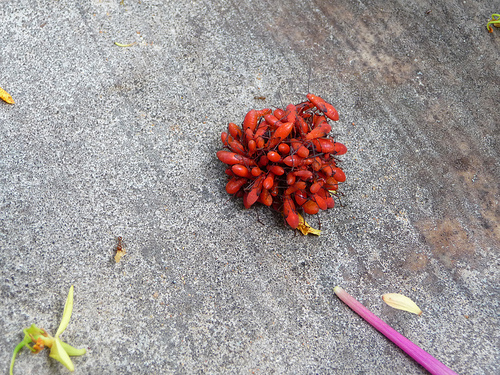
Radha HS photographed these hungry Boisea coimbatorensis nymphs in Mysore, India. The nymphs are feeding on a Sapindus (soapberry tree) seed, thus the rounded shape of this aggregation. The seed is contained within a rounded "soapberry" or "soapnut" fruit. In the spring, B. coimbatorensis reproduces, coinciding its reproduction with the fruiting of the soapberry tree. Bugs that hatch during this ideal season will have sufficient food to get them to adulthood. The formation of feeding aggregations, such as the one pictured, allows the young insects to get maximal nutrition from the seeds available and actually grow faster. But, as the spring fruiting season comes to an end, the soapberries become increasingly scarce. Once all the seeds have been fed upon, many of these nymphs will disperse in search of food, starve, or resort to cannibalism- a brutal fate for such gentle creatures.


